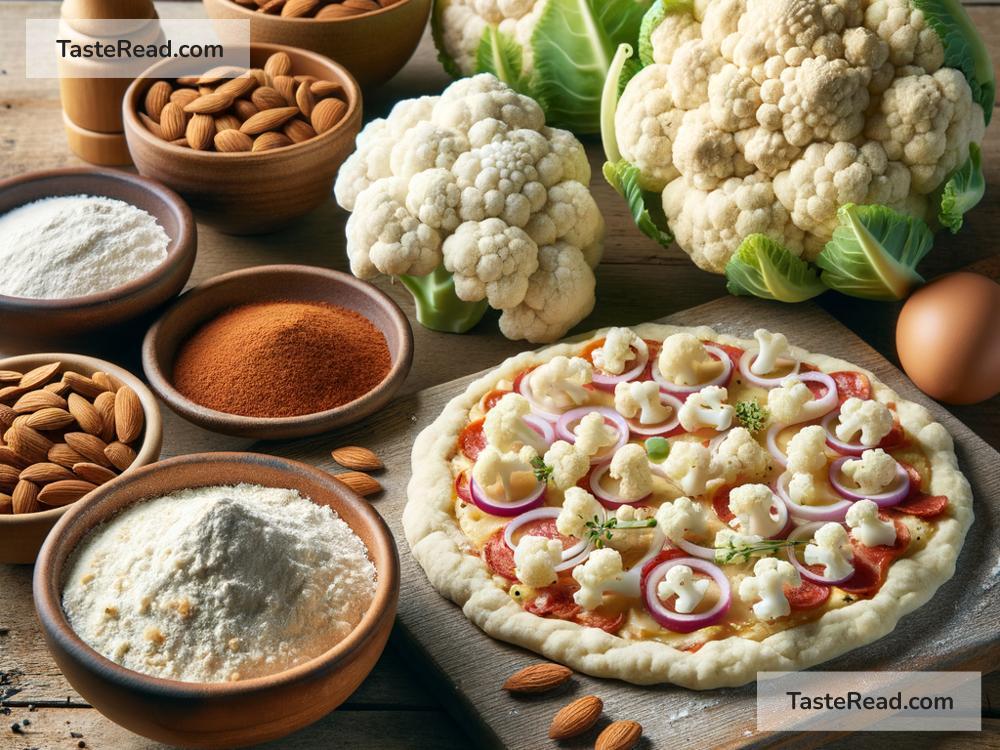Why Cauliflower Can Be Used in Gluten-Free Recipes
In recent years, cauliflower has become a superstar ingredient in gluten-free cooking. If you’ve ever tried gluten-free pizza crust, rice, or tortillas, there’s a good chance cauliflower played a big role in making those recipes possible. But why is cauliflower such a popular choice, and how can it replace gluten-containing ingredients like wheat flour? Let’s explore the reasons why cauliflower is such a versatile ingredient for gluten-free recipes!
What is Gluten and Why Avoid It?
Before diving into cauliflower, it’s important to understand gluten. Gluten is a protein found in wheat, barley, and rye. It gives baked goods like bread and pizza dough their stretchy texture and helps them rise properly. However, for people with celiac disease, gluten intolerance, or gluten sensitivity, consuming gluten can lead to unpleasant symptoms like stomach pain, fatigue, and inflammation. To avoid these issues, many people opt for gluten-free diets, which rely on alternative ingredients to replace wheat-based products.
This is where cauliflower comes into the picture!
Why Cauliflower Is a Game-Changer in Gluten-Free Cooking
Cauliflower isn’t just trendy—it’s incredibly effective in gluten-free recipes for several reasons:
-
Naturally Gluten-Free:
First and foremost, cauliflower is naturally gluten-free. Unlike wheat and other grains that contain gluten, cauliflower is a vegetable that poses no risk to people who cannot eat gluten. It’s safe for those with gluten sensitivities and fits seamlessly into gluten-free recipes. -
Versatility:
Cauliflower is one of the most versatile vegetables out there. It can be boiled, steamed, roasted, mashed, blended, or even riced to mimic other textures in cooking. This adaptability makes it easy to transform cauliflower into a gluten-free alternative for flour, grains, or dough. -
Neutral Flavor:
Cauliflower has a mild, neutral taste, which means it pairs well with almost any seasoning or sauce. Whether you’re making pizza crust, tortillas, or pasta, cauliflower doesn’t overpower the flavors of the recipe. Instead, it acts as a blank canvas that lets other ingredients shine. -
Low Carb and Healthy:
Beyond being gluten-free, cauliflower is a low-carb and nutrient-rich vegetable. It’s packed with vitamins like C, K, and B6, along with antioxidants that help support immune health. For people following gluten-free diets that also emphasize low carb or keto principles, cauliflower’s health benefits make it an excellent choice. -
Great Substitute for Starchy Ingredients:
In many recipes, gluten-containing ingredients like flour or bread crumbs play a structural role. Cauliflower can mimic that same structure when prepared correctly. For example, when finely processed or riced and mixed with binding agents like eggs or cheese, cauliflower “dough” can hold together in ways similar to wheat flour.
Common Ways Cauliflower is Used in Gluten-Free Recipes
Now that you know why cauliflower is such a valuable ingredient, let’s look at some of the most common ways it’s used in gluten-free recipes:
-
Cauliflower Pizza Crust:
Pizza crust made with cauliflower is a hit among gluten-free and low-carb eaters alike. To make it, cauliflower is steamed, riced, and mixed with ingredients like eggs and mozzarella to form a dough-like consistency. Once baked, the crust becomes firm and crispy, making it perfect for holding toppings like sauce, cheese, and vegetables. -
Cauliflower Rice:
Riced cauliflower is another popular substitute for grains like white rice or couscous. By blitzing raw cauliflower in a food processor or grating it by hand, you get small, rice-like pieces that can be sautéed or fried. It’s an excellent base for stir-fries, bowls, or curries. -
Cauliflower Tortillas:
Tortillas typically require flour to hold their shape, but cauliflower can step in as a gluten-free alternative. Similar to the pizza crust method, riced cauliflower can be formed into thin, flat rounds that are baked or pan-fried. The result is a lightweight tortilla that’s perfect for tacos or wraps. -
Cauliflower Gnocchi:
Italian gnocchi, traditionally made with flour and potatoes, gets a gluten-free twist with cauliflower. Mashed cauliflower can be mixed with almond flour or other gluten-free flours to create soft, pillowy dumplings that taste delicious in sauces. -
Cauliflower in Baking:
Cauliflower can even sneak its way into baked goods! Puréed cauliflower can add moisture and texture to bread, muffins, and pancakes, all while being completely gluten-free. Its natural creaminess works well in sweet and savory dishes alike.
Tips for Cooking with Cauliflower
If you’re new to cooking with cauliflower, it’s helpful to know a few tricks to make the most of this powerhouse vegetable:
- Remove Excess Water: Cauliflower often holds a lot of moisture, especially after cooking. Squeeze or drain it thoroughly to avoid soggy recipes.
- Add Binding Agents: Cauliflower doughs and batters need something to hold them together, like eggs, cheese, or flaxseed. These additions ensure your recipe doesn’t crumble.
- Season Generously: Since cauliflower tastes mild, adding spices, herbs, and sauces will amplify the flavor of your dish.
Conclusion
Cauliflower is truly a kitchen hero for those following gluten-free diets. Its versatility, ability to mimic gluten-containing ingredients, and health benefits make it a great choice for replacing wheat flour and other gluten products in recipes. From pizza crusts to gnocchi, rice to tortillas, cauliflower opens up a world of delicious, gluten-free possibilities!
If you haven’t tried cooking with cauliflower yet, now’s the perfect time to get creative. With its ability to transform into so many dishes, cauliflower proves that gluten-free cooking doesn’t have to be limiting—it can be fun, healthy, and full of flavor!


